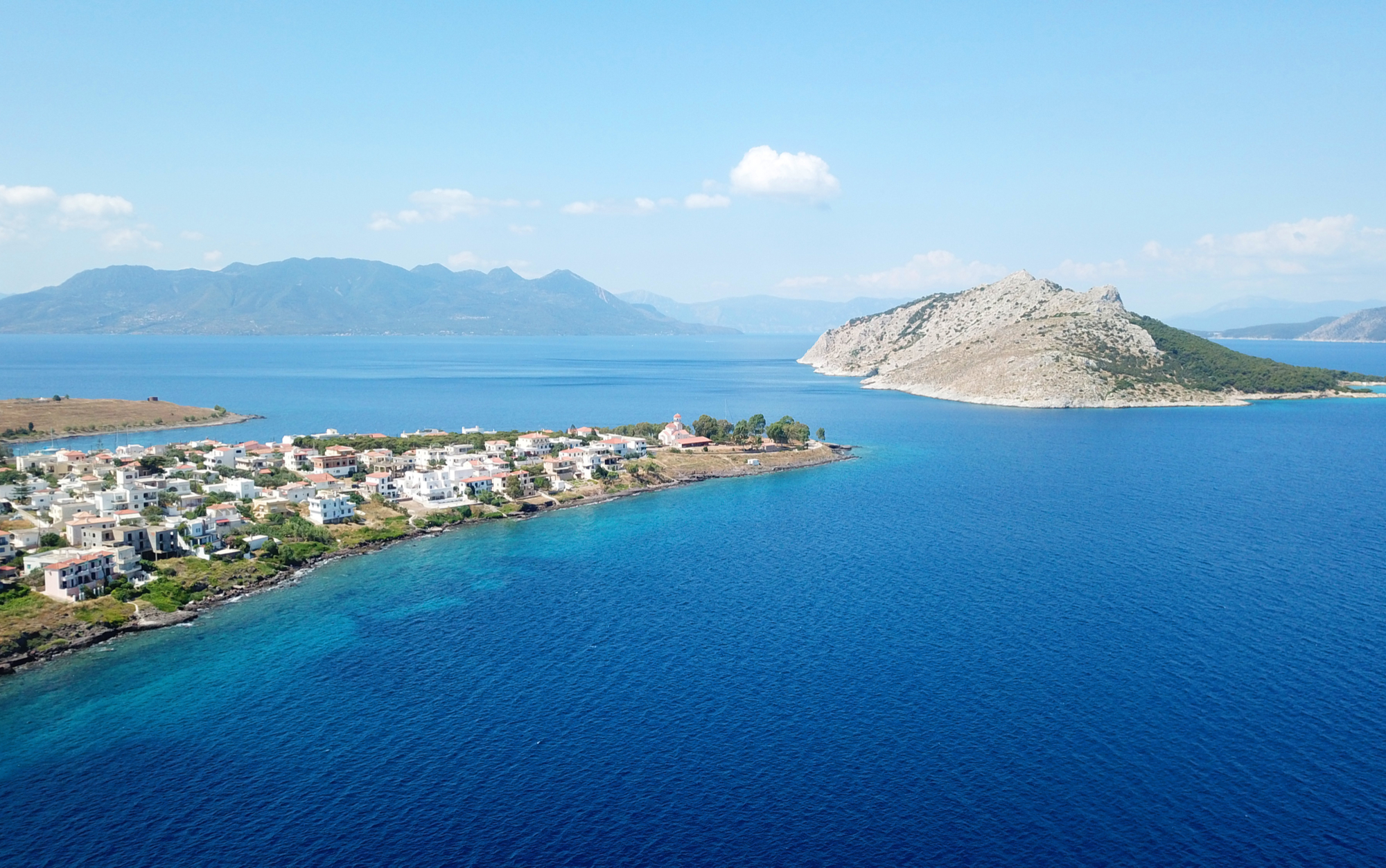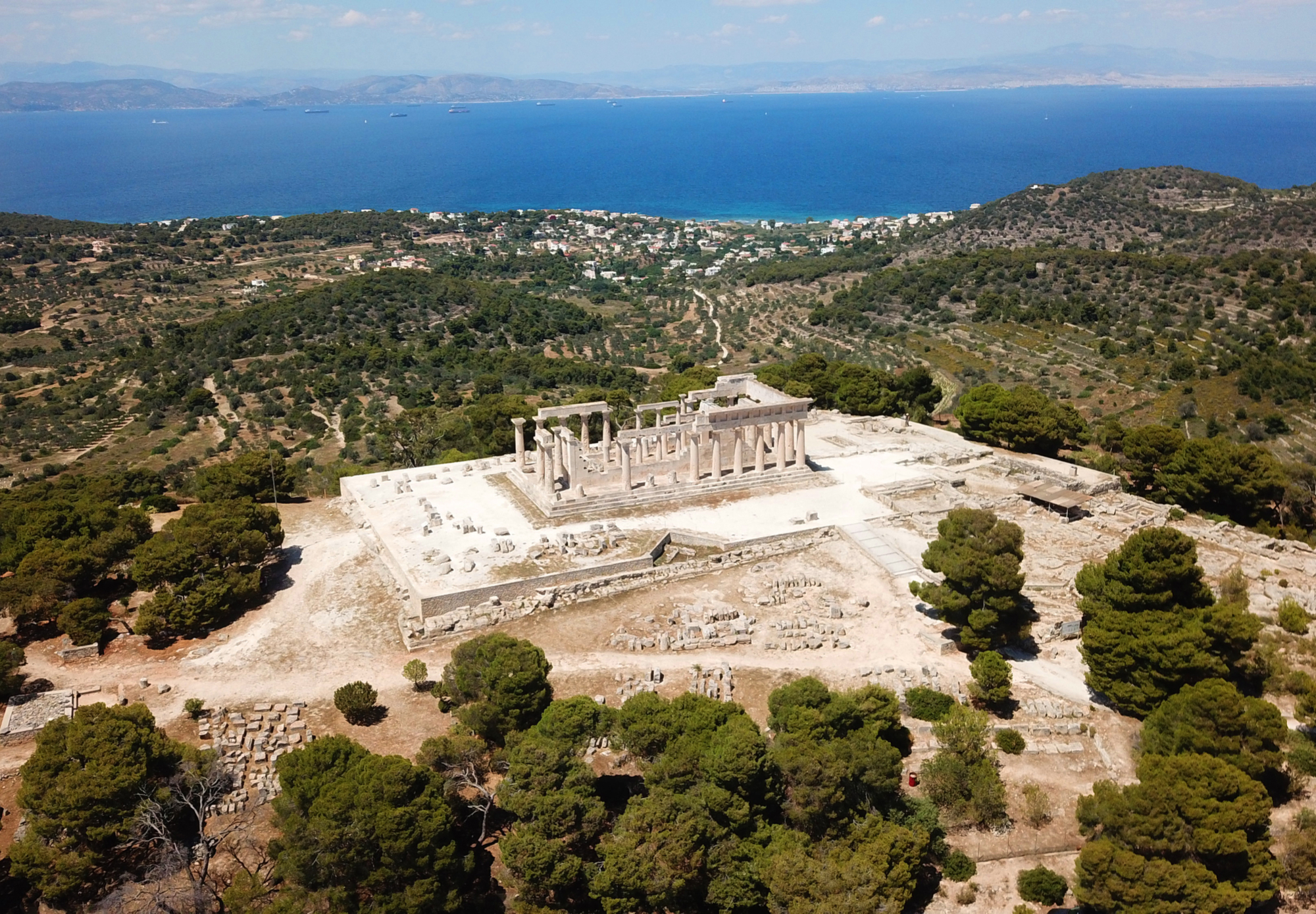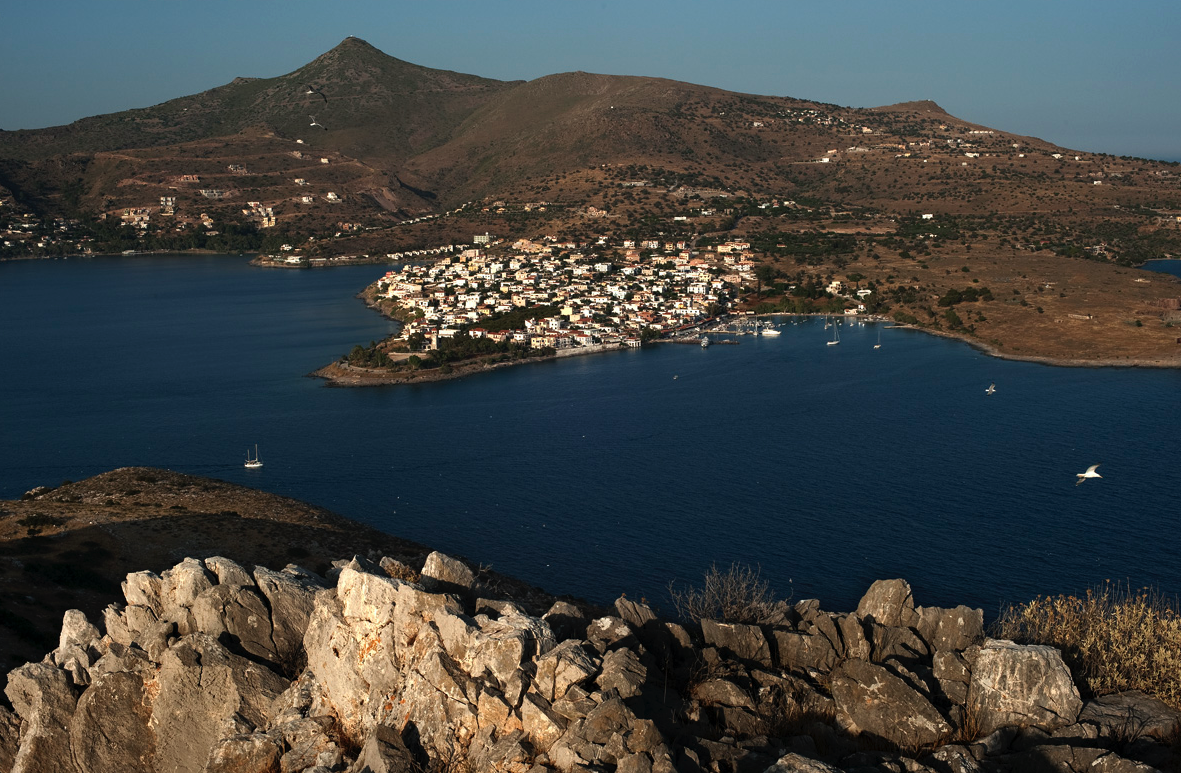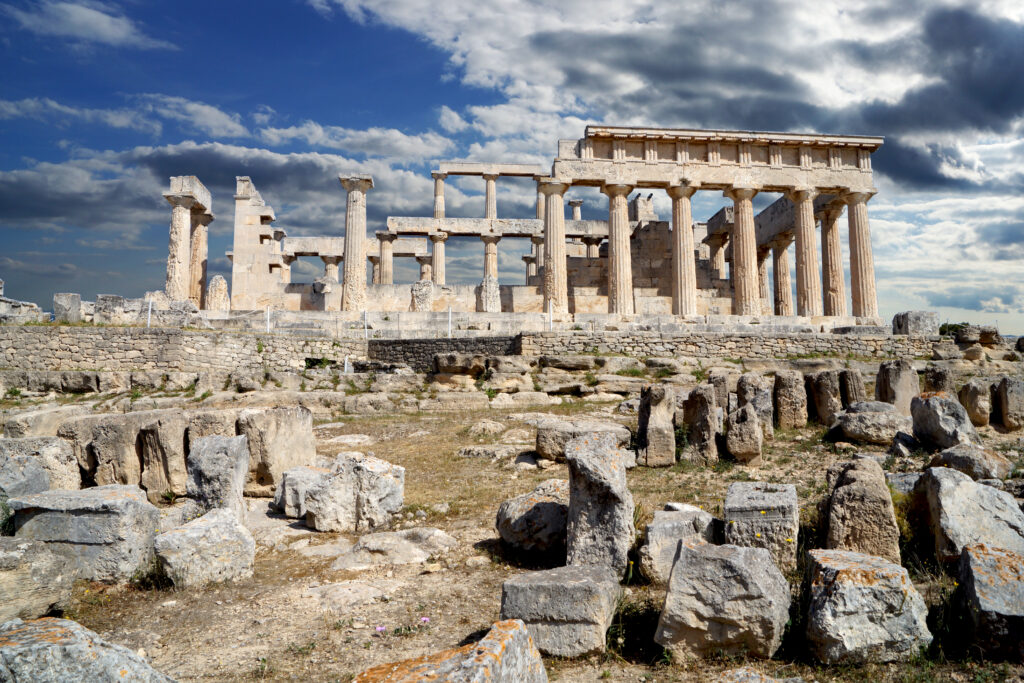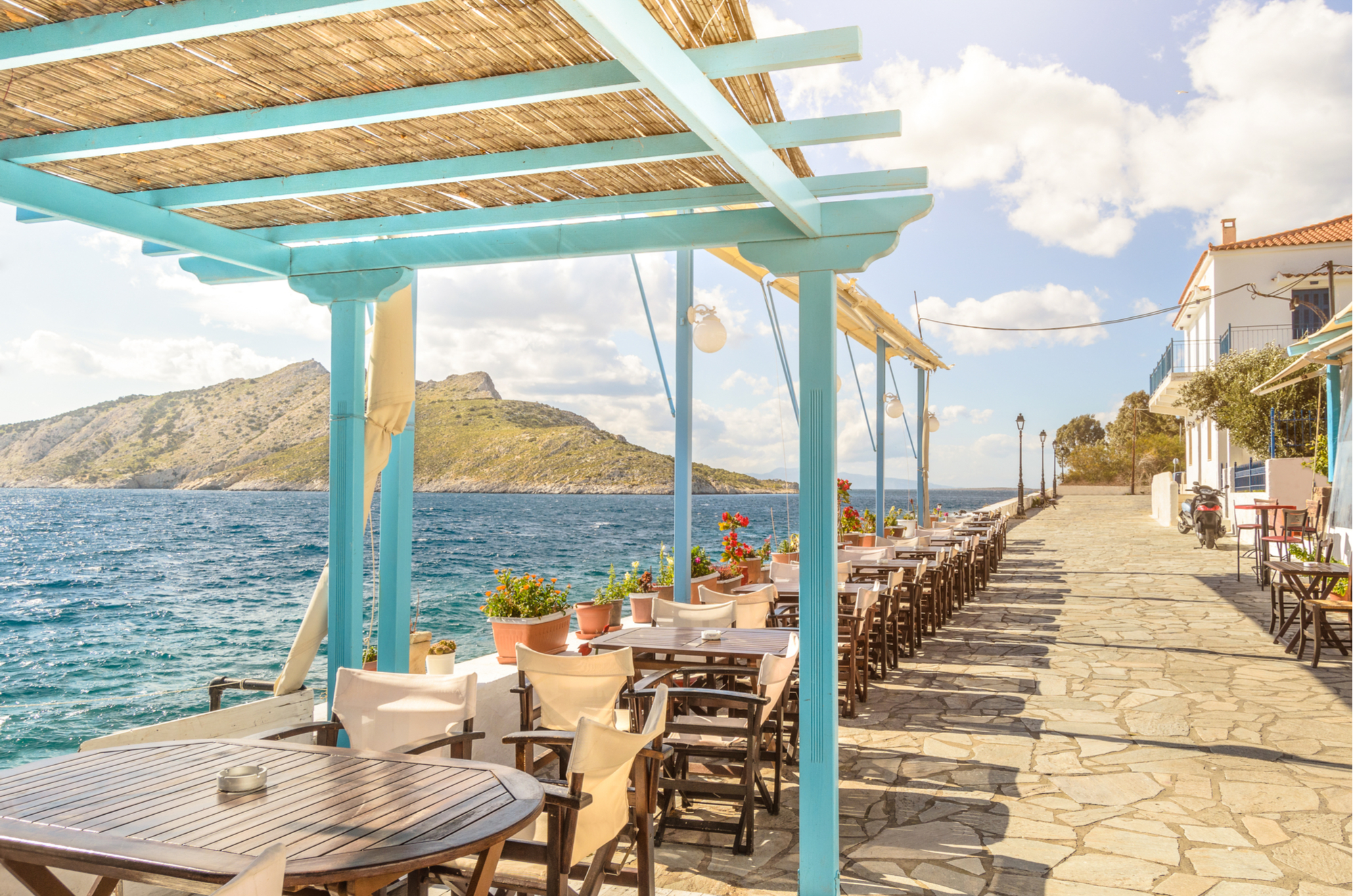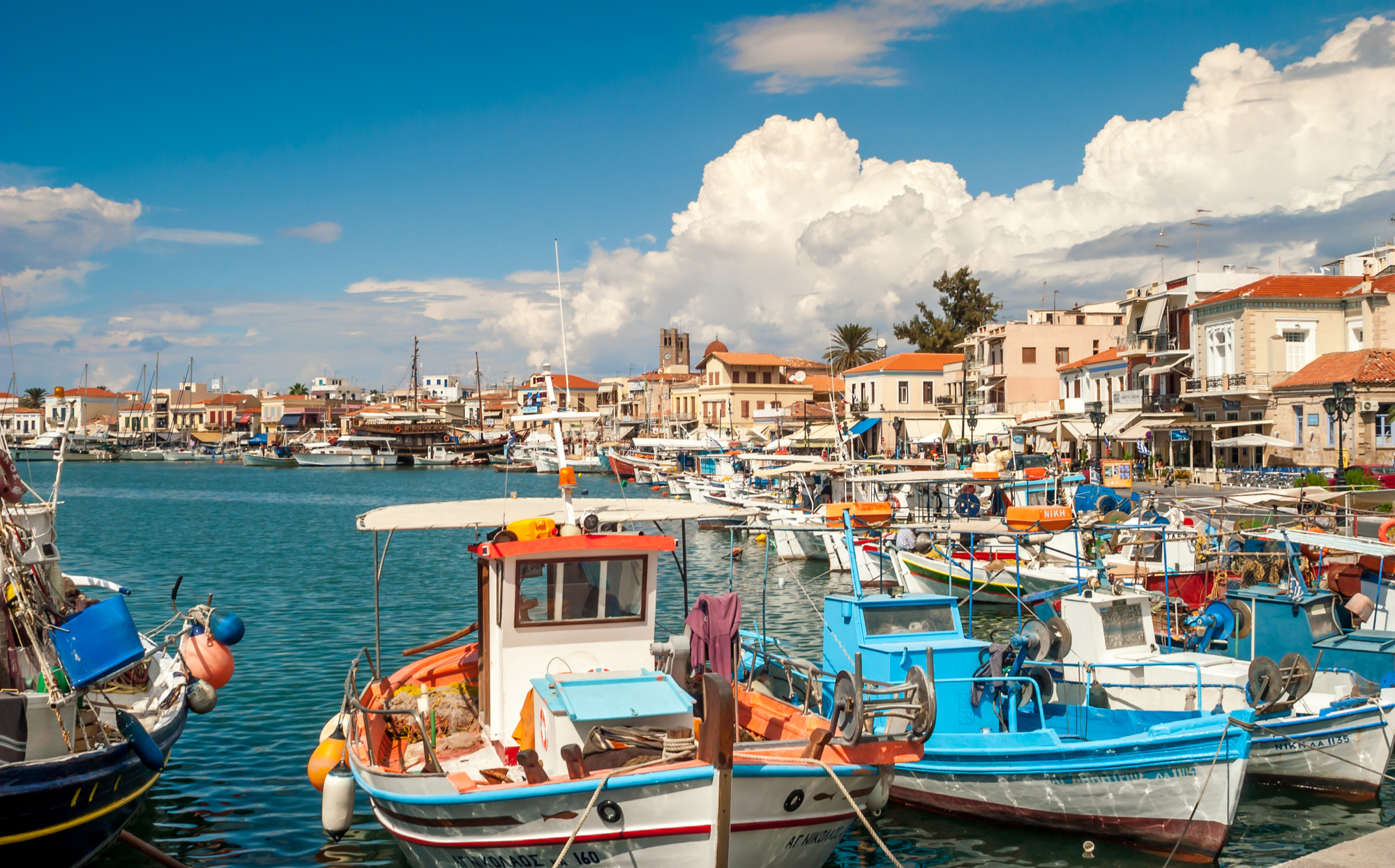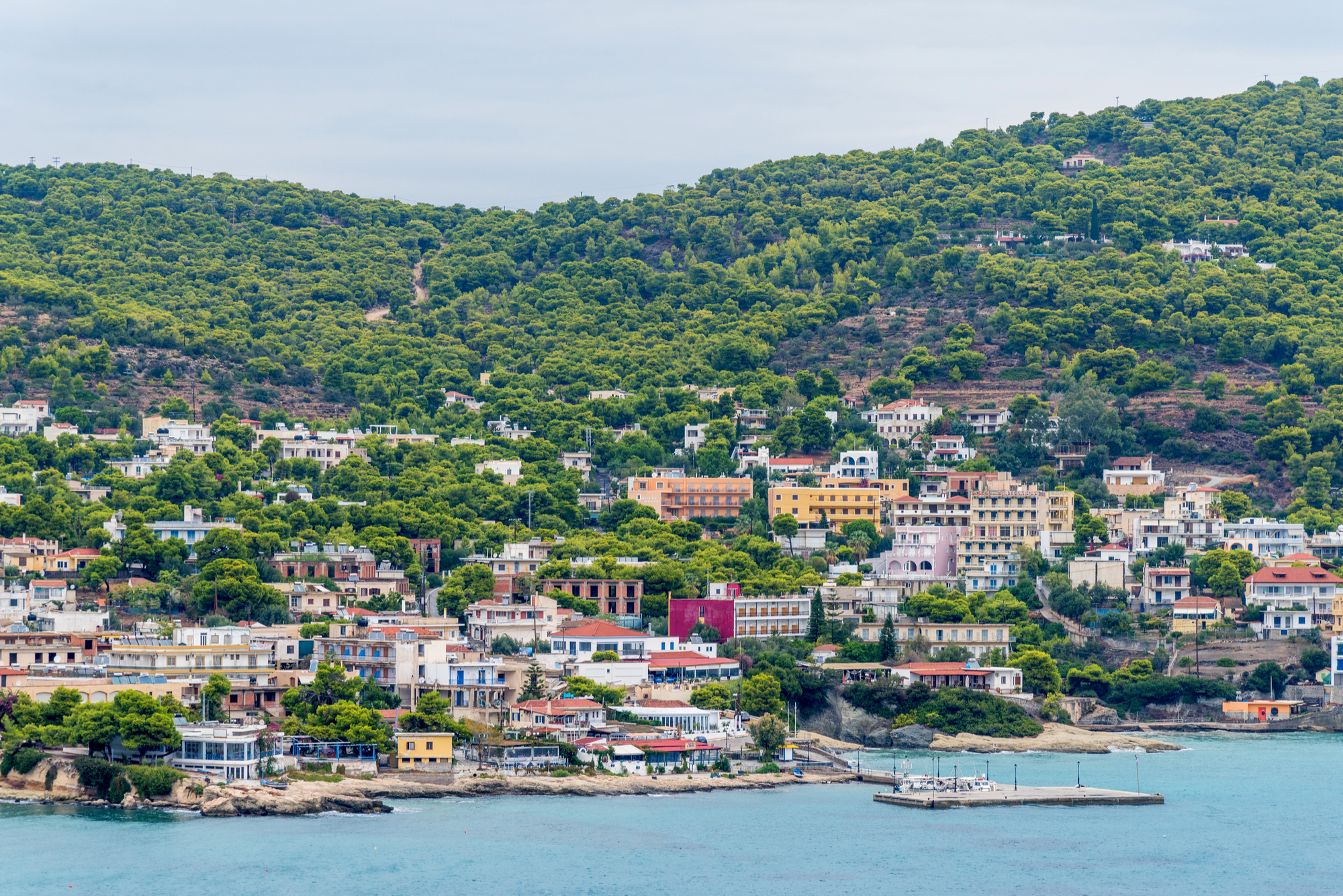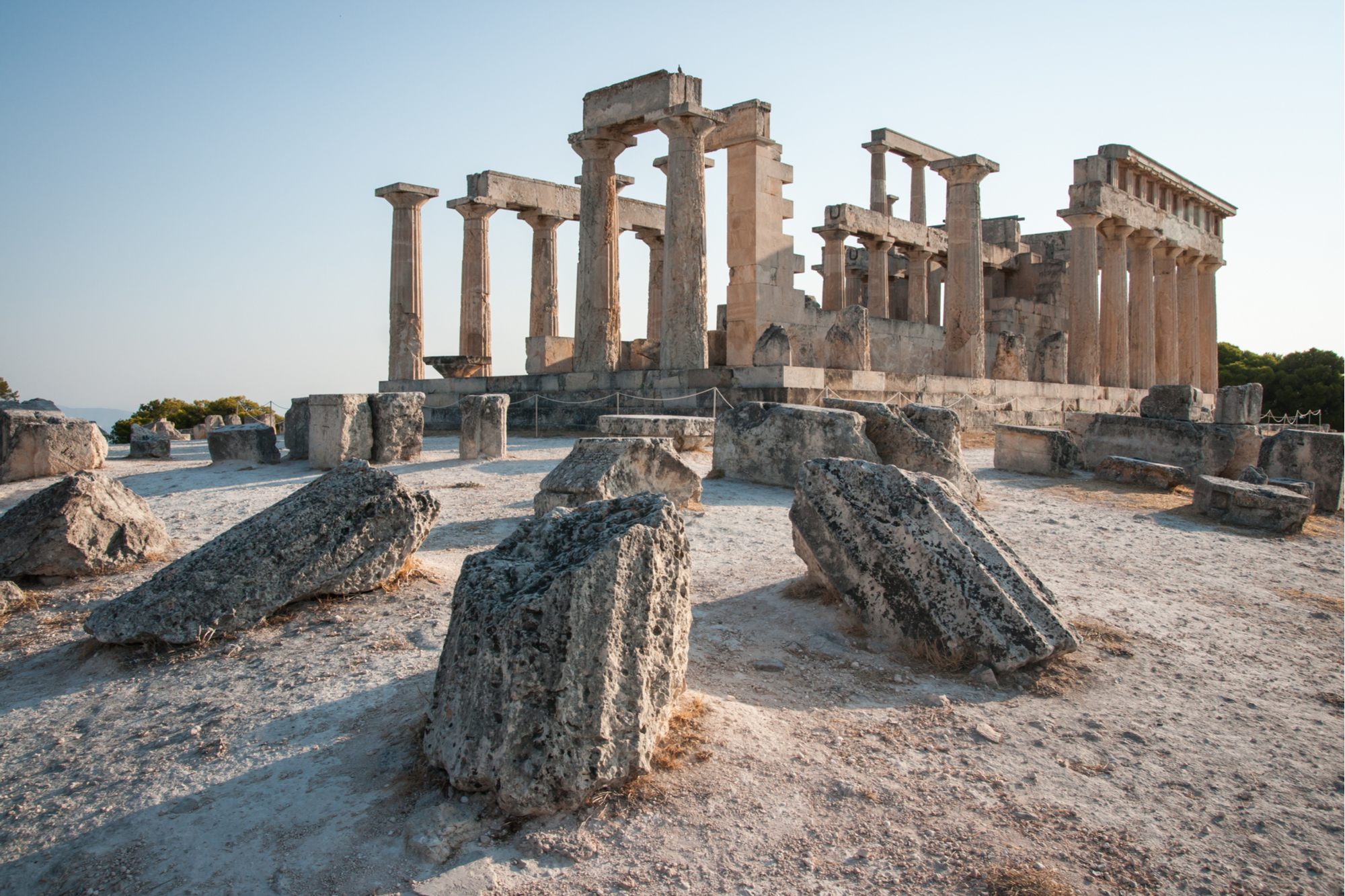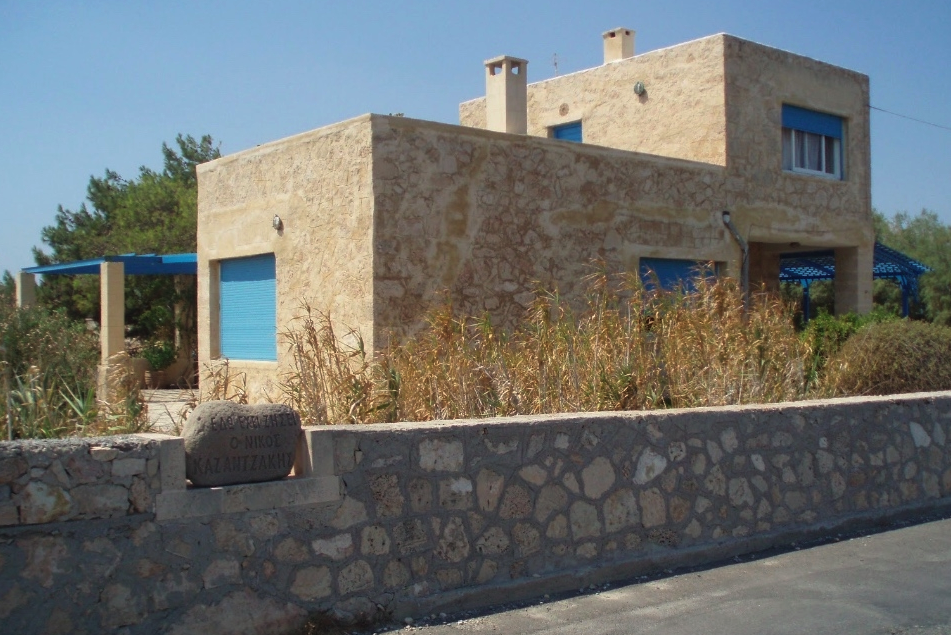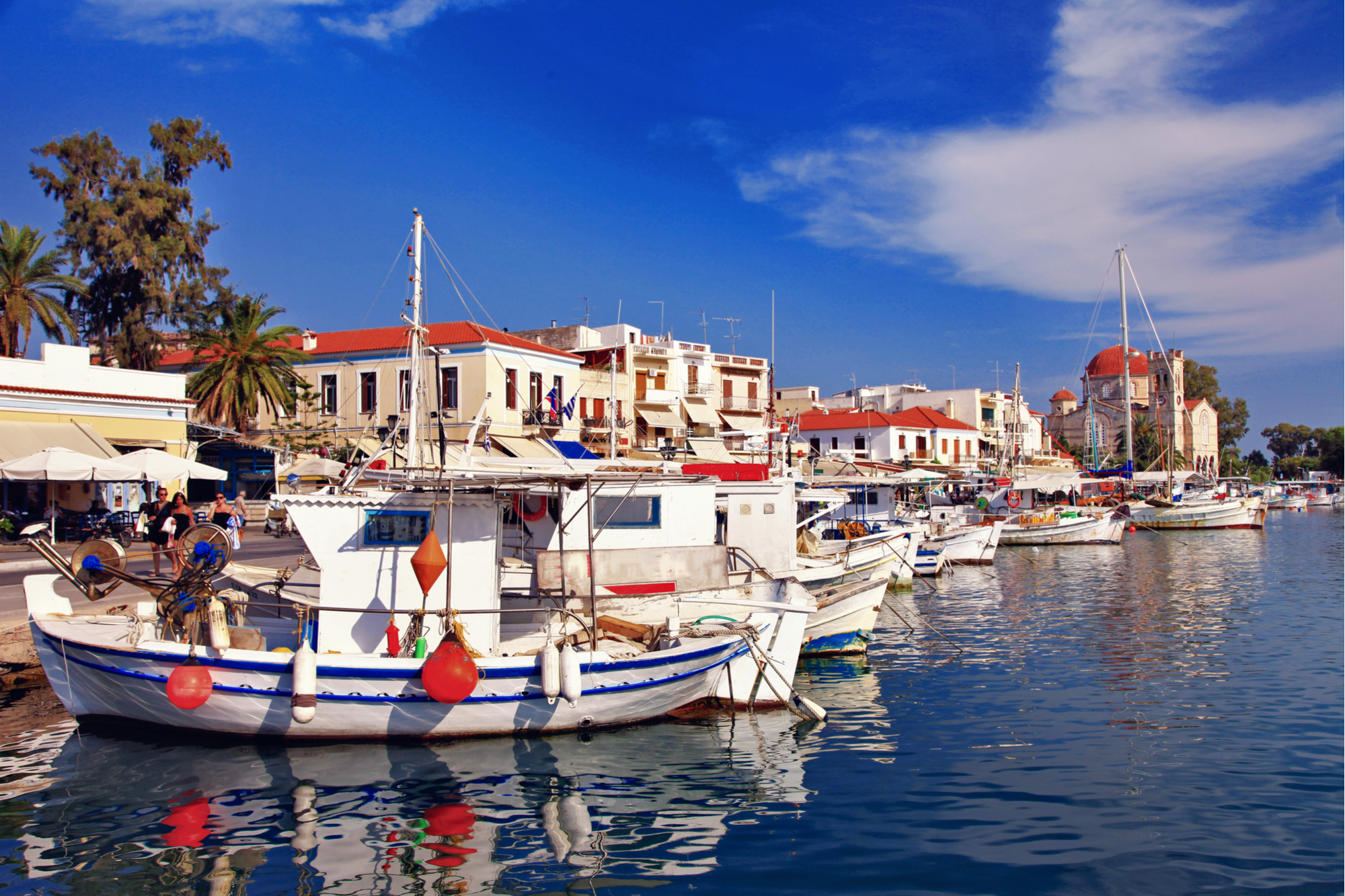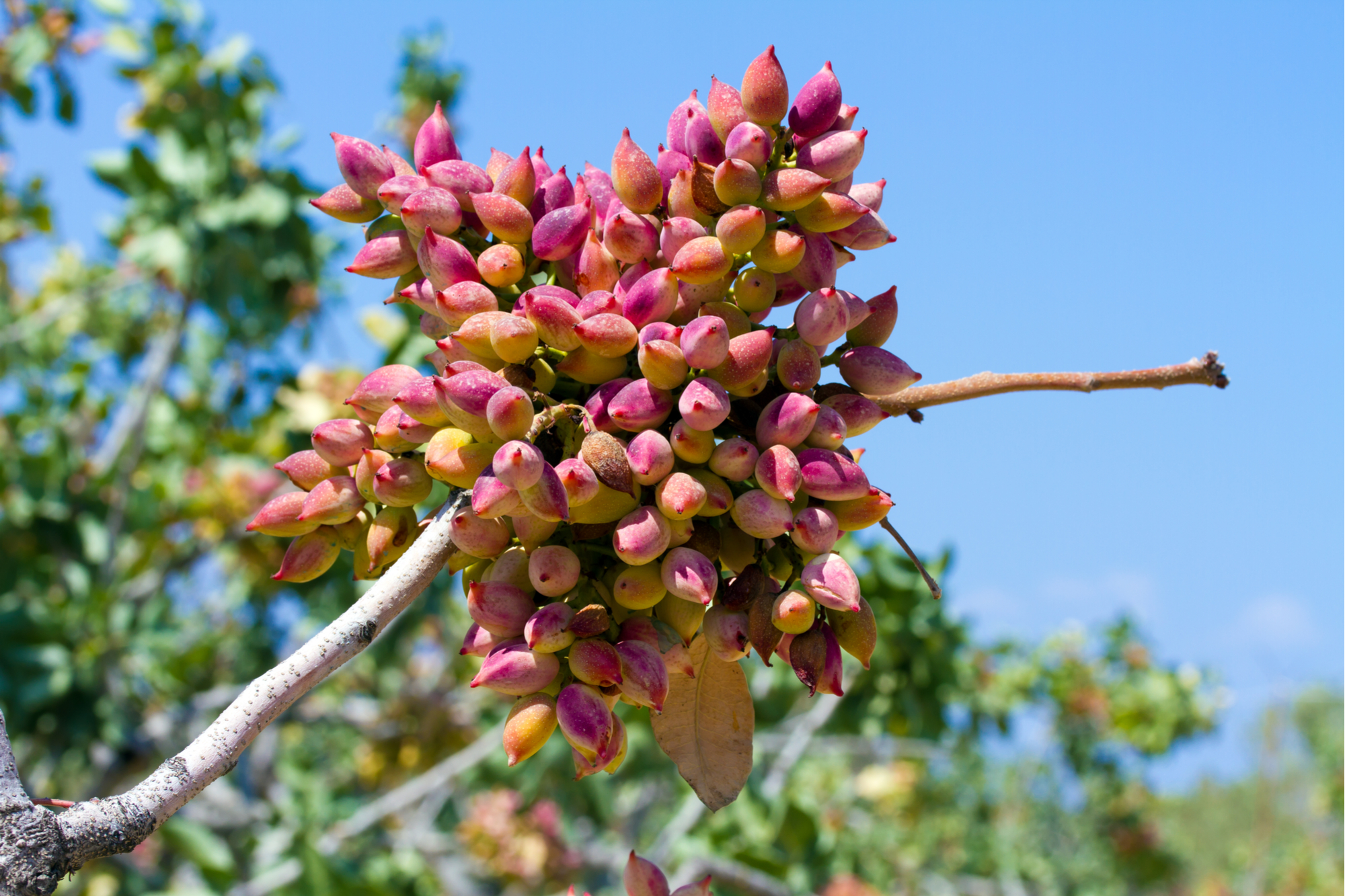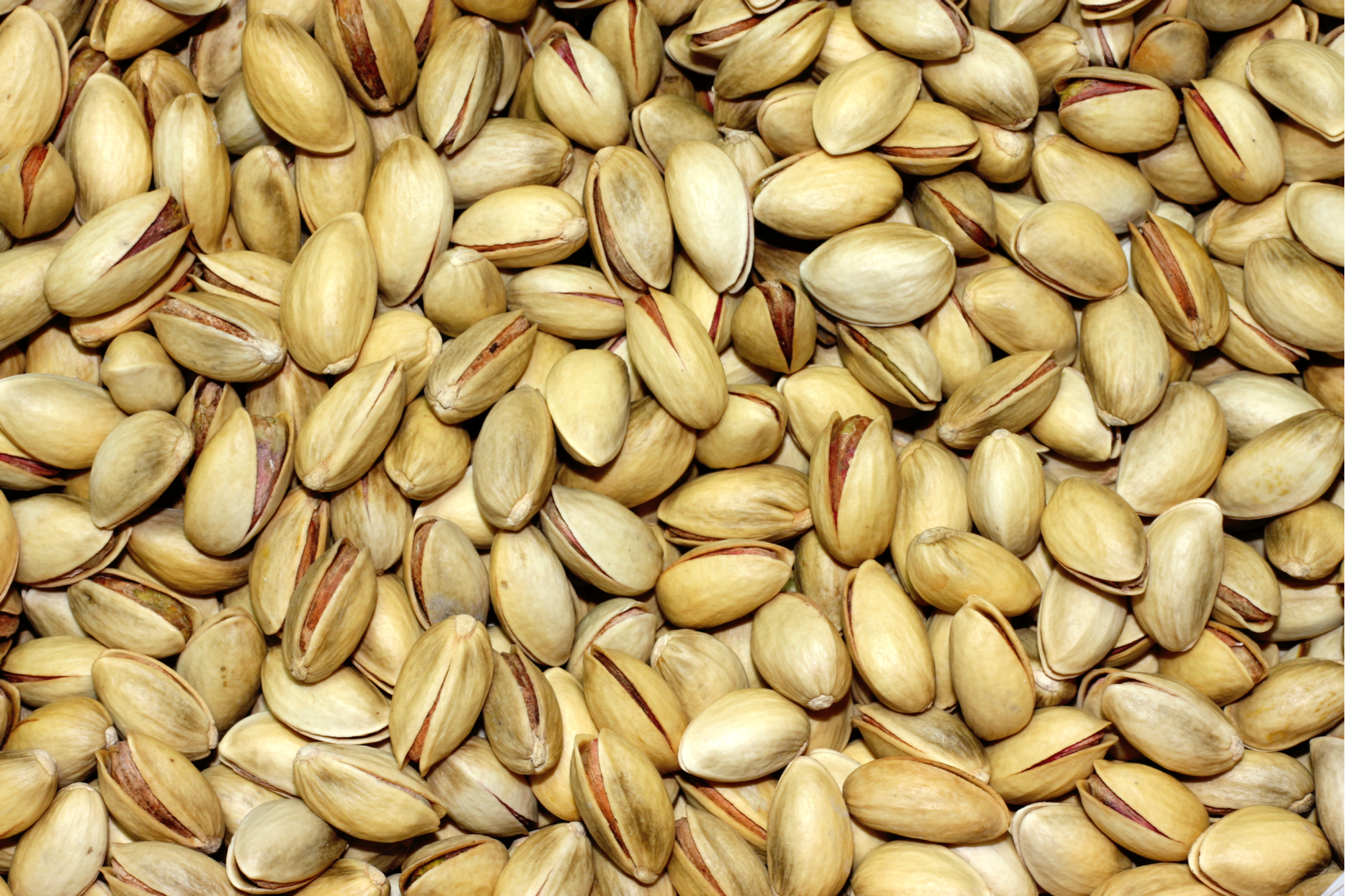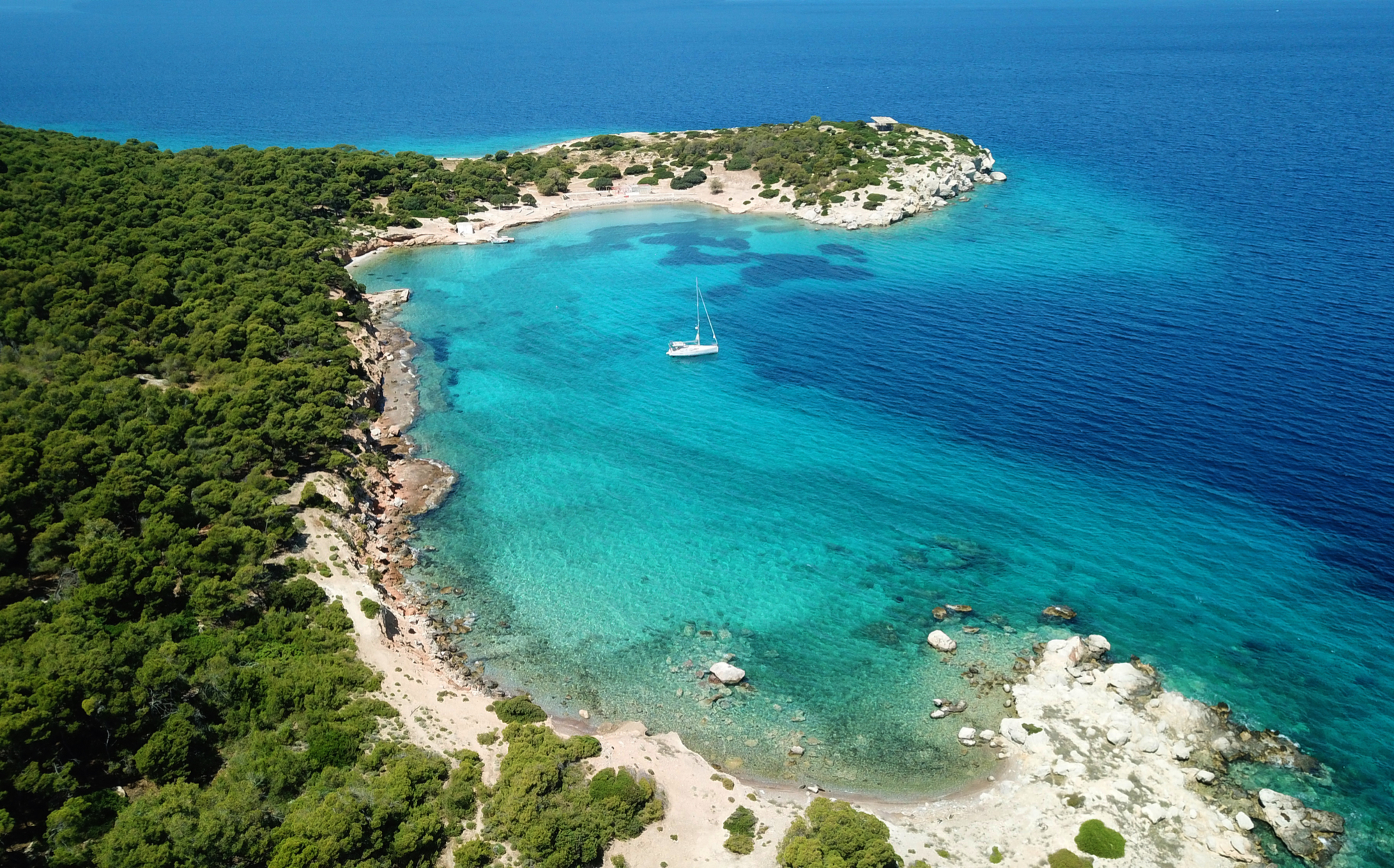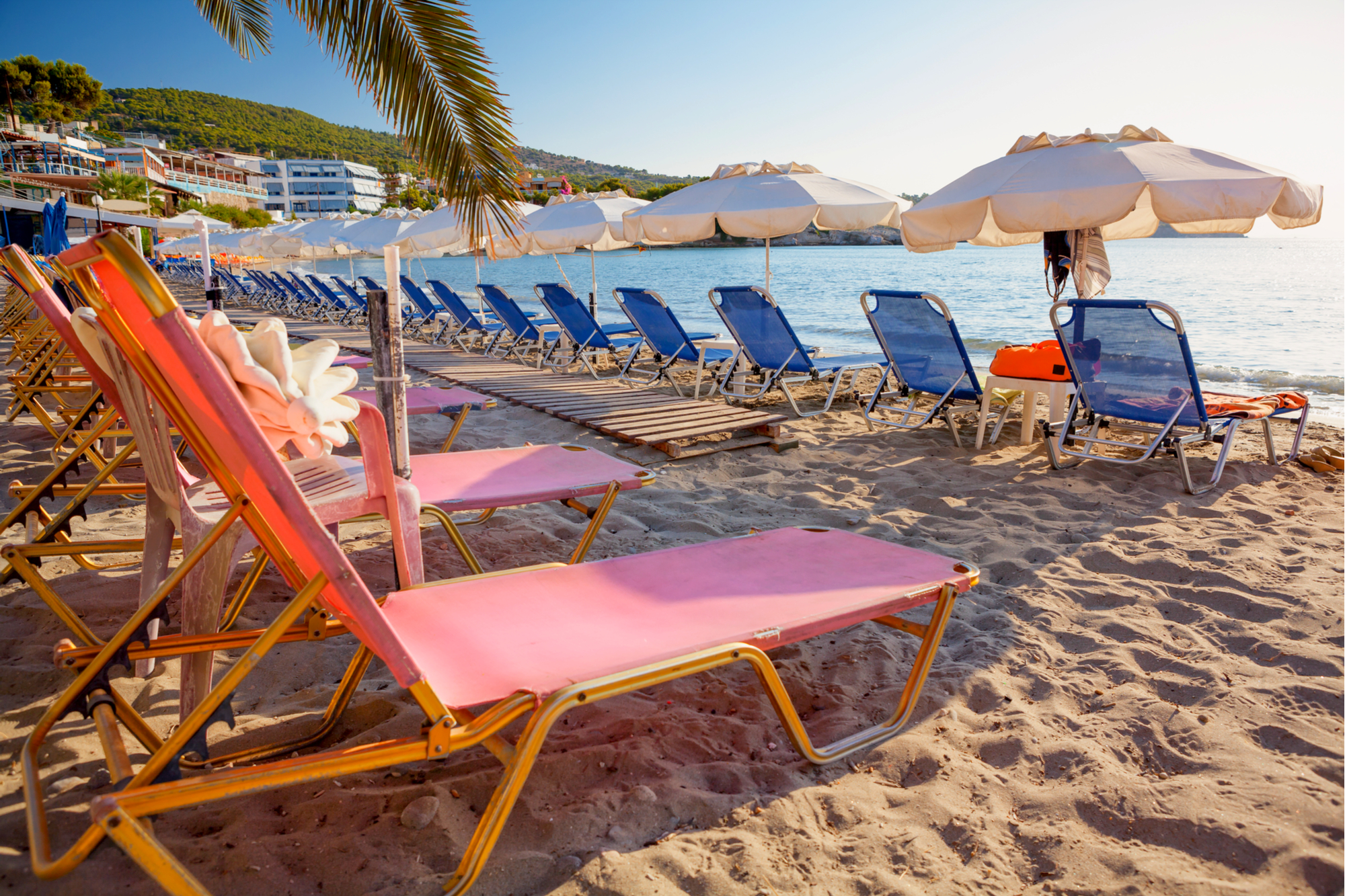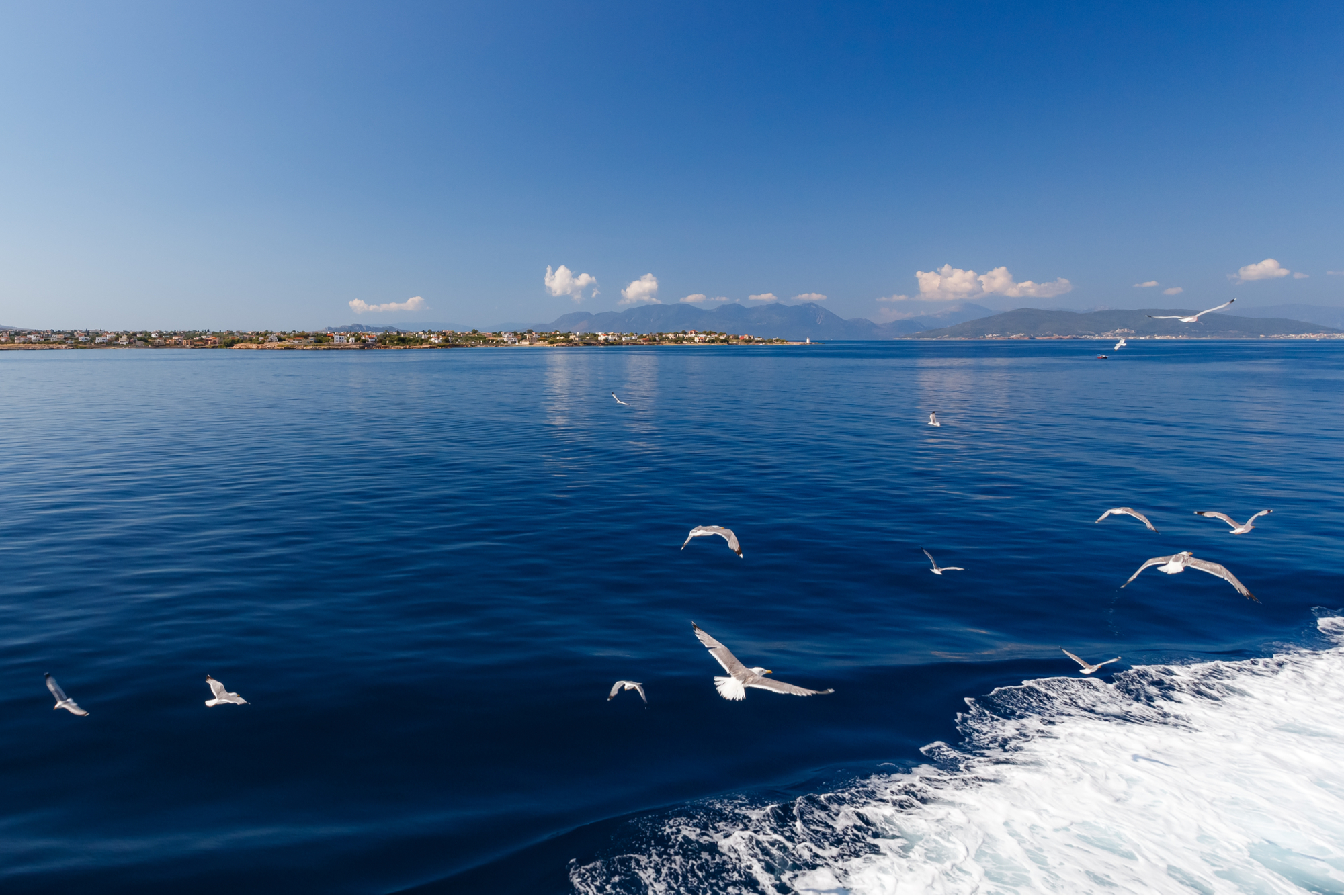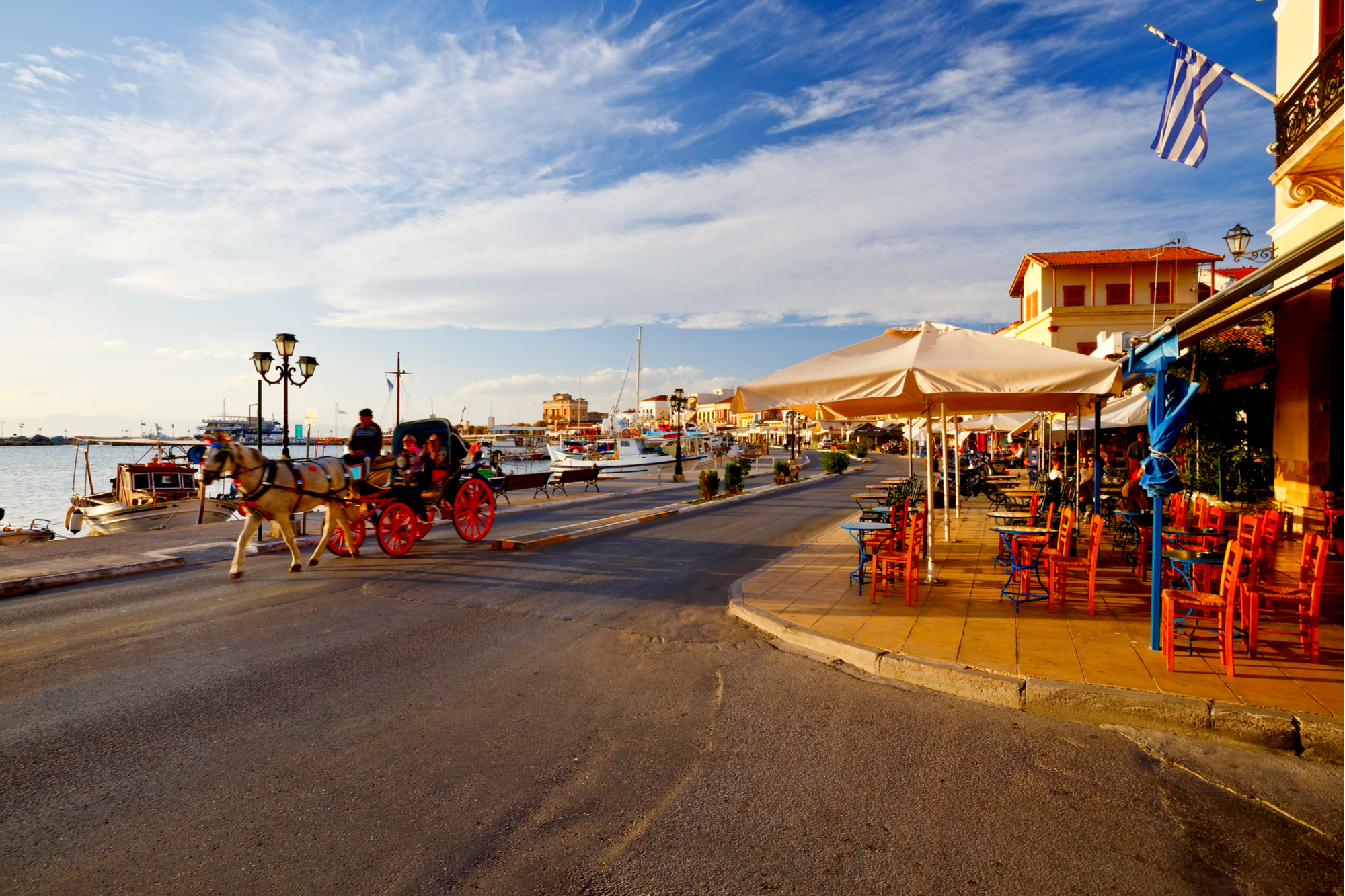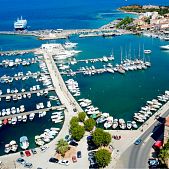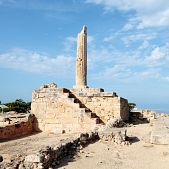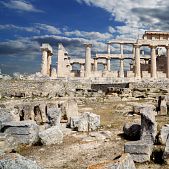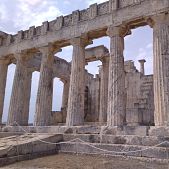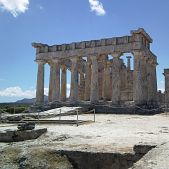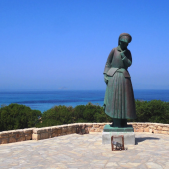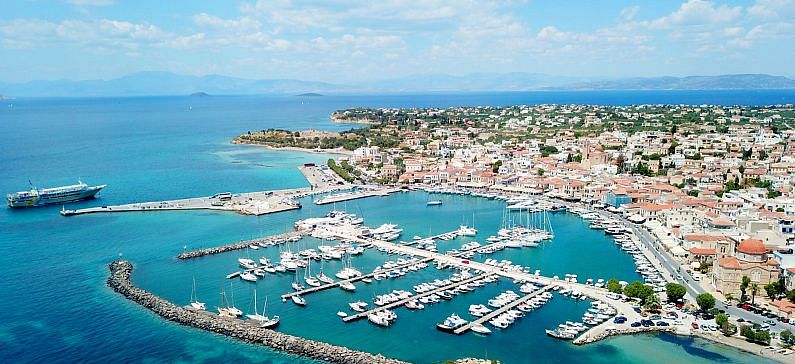
The island-treasure of Argo-Saronic gulf
Aegina is the most popular island of the Saronic Gulf. It is located right in the gulf’s center and is surrounded by Agistri, Methana, Troizina, Poros and the coasts of mainland Attica. Its territory is volcanic, with the northern regions consisting of sedimentary rocks and the south of an explosive and composed of low hills and some lowlands. The highest mountain is Oros, which is 532 meters high, while the island’s characteristic is that it has no rivers or generally running water.
In ancient times, Aegina was a settlement center of Peloponnesians, Myrmidons and Aegians. Later, it joined with other maritime cities in the institution of the Amphictyony Kalavria participated in the naval battle of Salamis against the Persians and the classical era was a city in the Achaean League. The city of Aegina was also the first capital of Greece. Today, it is the second largest in size, population and growth island of the Argo-Saronic gulf, attracting many people because of its proximity to Athens, with the result that in the last decades tourism is the most important economic activity of the island.
Legend -Mythology- has it that Aegina owes its name to the daughter of God Asopos Aegina, whom Jupiter fell in love with and abducted on the island of Oinon, which was renamed Aegina. Its strategic position in antiquity seems to be the reason it was inhabited before 3,500 BC. According to Herodotus, Aegina was a colony of Epidaurus. Excavations have found Minoan ceramics of 2000 BC, as well as golden jewels that belong to the late period of Mycenaean art, which advocate the version of preserving the Mycenaean civilization for some generations after the descent of the Dorians, who apparently conquered the island in 950 BC.
In the 7th century BC, Aegina participated in the political federation under the name Amphictionia of Kalavria, along with Athens, the Boeotian Orchomenos, Troizina, Ermioni and Nafplia, in order to fight the prosperous piracy in the Aegean due to the Mycenaean decline. During the Archaic period (734-459 BC) Aegina flourished evolving into an important naval and commercial power of the time developing export trade pottery and domestic production of perfumes. The Aiginites were the first to make silver coins in Greece, a few decades after the Lyndes invented the coin. Also, the Aiginites had important interests in Hellespont, while they were shareholders at the commercial station of the Egyptian city of Nafkratis.
The naval primacy of Aegina and the consolidation of the oligarchic faction in power was an obstacle to the aspirations of Athens, resulting in the end of the 6th century BC. to see tension with each other. Although in the Persian Wars they supported Darius, in the Persian Wars they coalesced with the rest of the Greek cities, taking with them the Athenians.
After the end of the war, Aegina coalesced with Sparta and Corinth, resulting in a final conflict with Athens, which was attacked in 458 BC. The naval battle followed by the Aiginites was defeated and then their capital was captured by the Athenians. The defeat of the defeat was the collapse of the city walls, the delivery of the ships and the imposition of a tax of subordination. During the Peloponnesian War (431 – 404 BC) the Aeginites were expelled to the Peloponnese and returned after the end of the war.
In the years that followed, Aegina lost all its glamor, ending in succession with the Aetolians, the Pergamines and the Romans. According to Pausanias, who passed through the island in 150 AD, there was nothing remarkable in Aegina, while its historic harbor was totally destroyed. Due to the raids of the Goths and Heroules in Sterea Hellas and the Peloponnese, large populations moved to Aegina, which had a second edge. During the 10th century the raids of the pirates forced a part of the inhabitants to emigrate, and then the capital was transferred to the hinterland, in particular to the Old Town.
In the last decades of the 12th century, when piracy took on a large dimension due to the decision of John II Komnenos to cut off funds to the navy, Aegina became the main base of pirates, especially for their attacks on Attica, whose inhabitants are terrified by grabbing material goods, animals, people for slaves or ransom, and of course killing many residents often in a cruel way or simply amputating them. The Metropolitan of Athens, Michael Choniatis, precisely for this reason, characterizes Aegina as a “pirate nest”.
In the following centuries, Aegina was subjugated by the Franks (1204-1317), the Catalans (1451-1540), the Venetians (1451-1540 and 1687-1715) and the Ottomans (1540-1687 and 1715-1821). The most important disaster, however, was made by Hayreddin Barbarossa, who plundered the capital and captured about 4,000 to 7,000 Aegines. At the end of the 18th century, the Aeginites left the Old Town and settled in the place of the ancient city of Aegina.
During the Revolution of 1821, they fled to Aegina thousand inhabitants of mainland Greece, the Peloponnese and the Eastern Aegean and particularly the areas of Galaxidi, Psara and Athens. It is estimated that around 400 Aeginates participated in the Revolution. In the period 1826 – 1827 the Greek government settled on the island, since the designated capital city of Nafplio did not provide the necessary security at that time and in 1827 Aegina was officially designated as the first capital of the newly established Greek state, a property that it retained until 1829, with the transfer of the capital to Nafplio.
According to the historian Edgar Quinet, at the age of Kapodistrias, the population was 10,000, along with refugees -which accounted for 70% of the population- while according to government estimates the population was 40,000. At that time the buildings constructed housed the Mutual School and the National Printing Office, the Archaeological Museum and Government House, which housed the country’s first library.
The first educational institution that operated in Aegina -but generally in the newly liberated Greece- was the Central School founded by Ioannis Kapodistrias in 1829. The purpose of this three-year school was to create teachers and executives for the state services. The Central School was housed in Eynarzio, a building where the Panhellenic Panhellenic House had previously been built and which was built with the assistance of the Swiss philhellene banker Eynard. After the death of Capodistrias, the school was closed in January 1832. In the 19th century and early 20th century, the island was functioning as a schoolhouse, something similar to the current Gymnasium. Since 1932, the school has been housed in the Governor’s office, and since World War II and the German Occupation, since 1945, Aegina operates as an annex to the Secondary High School in Piraeus and since 1959 the school ceases to be an annex and operates as a secondary school in Aegina.
After the transfer of the capital of Greece, Aegina began to decline, while its population gradually declined by half. On the dictatorship of John Metaxas, in the 1930s, the construction of naval strongholds in Perdika and Tourlos, which together with the naval stronghold of the Fleves and the fireworks of Pounta and Keramo were the part of the Greek coastal defense, which became known as “Saronic Marine Forces”. In 1940, the Navy proceeded to land mines in the maritime areas of Tourlos – Venes and Monastery of Aegina – Agios Georgios Methanos, thus creating a protected front. In April 1941 German stucco planes bombed three times the island of Aegina by destroying the two jetties at the harbor. In May of that year German troops landed forts Tourlos and Partridge and January 1942 the German submarine U-133 was sunk by a mine in Tourlos.
Aegina has important sights such as the Temple of Aphaia, Paleochora, the remains of the temple of Hellenic Zeus, the prehistoric settlement of Kolona (with the monolithic column that has been preserved from the temple and has been for years a sign of orientation for the Venetian seamen, who named the Colonna area, the Markelux Tower, the Metropolis, the Capral Museum, the Folklore Museum and the Archaeological Museum. The most famous beaches of the island are Marathon, Agia Marina, Perdika and Souvala. A popular tourist center is also the imposing Monastery of Agios Nektarios along with the oversized holy temple, as well as a multitude of churches rescued after the Ottoman domination.
Beginning with a visit to the sights and monuments of Aegina from the island, the visitor will observe the Statue of Manas, which is imposing outside the Museum of Christos Capralos, symbolizing the mother waiting for her navy son. A little further,house, will see from a very characteristic corner the house of Nikos Kazantzakis, where he stayed for many years and was isolated for long periods enjoying the magnificent view of the Argosaronikos. The dwelling is remarkable in its dainty architecture, while the place exudes a more general ascetic mood.
Then when the visitor reaches the Temple of Aphaia -and if of course the atmosphere is kathari- will be able to distinguish the Acropolis and the Parthenon, but even and the Temple of Poseidon at Sounion. The Temple of Aphaia dominates the top of a pine-covered hill in the northeastern part of Aegina and is considered to be the most preserved monument dedicated to the goddess Aphaia while it was built in a place where there was worship activity since the Mycenaean era with its construction dated to 500 – 490 BC.
Aegina had a remarkable sponge-fishing fleet up to the 1970s. The greatest acne of this activity took place in the late 19th century, employing about a thousand sailors and whales. During the Occupation, the sponge had been interrupted. It is noteworthy that in the early 20th century many Aiginites migrated to America, where they worked as divers and sponge divers in Tarpon Springs, Florida, USA. This coastal town, after the advent of experienced divers from Greece, quickly became a capital of sponge-fishing. In 1971 it was estimated that fishermen accounted for 40% of the labor force of Aegina, while farmers and stock farmers had the remaining 30%. Nowadays, the island’s fishing activity remains high, focusing mainly on chickens, gulls, mulberries and lizards, while livestock activity is extremely limited.
In Aegina, there are significant areas of cultivated land, while this is the island on which the potato was first cultivated in Greece, with the initiative of Ioannis Kapodistrias. The inhabitants traditionally cultivated wheat, barley, peas, chickpeas, etc., while retaining significant areas of vineyards, but whose cultivation, after the introduction of pistachios and phylloxera, subsided. According to published data, in 1950 the vineyards covered 13,500 acres of land, while in 1961 only 4,382 acres.
In 1896, doctor Nicholas Peroglou began the systematic cultivation of pistachio, which soon became popular with the inhabitants of the island. Since 1950, the cultivation of pistachios had surpassed significantly the rest of the agricultural activity, mainly due to the high profit yield.The quality of Aegean Pistachio, a name that was established as a Protected Designation of Origin product in 1996, is considered internationally superior and superior to a number of foreign varieties, due to the island’s unique, dry climatic conditions and the volcanic characteristics of the soil.
The locally grown pistachios (Fistiki Aeginis) have made Aegina known worldwide. Today, half of the pistachios are members of the Agricultural Cooperative of Aigin Pistachios. It is estimated that its pistachios cover 29,000 acres while the total production reaches 2,700 tons per year. In the last few years, in the middle of September, the Fistiki Fest Festival is organized every year with the name “Fistiki Fest”.
Aegina is an ideal island destination for a budget holiday, one hour from Athens. There are plenty of hotels and rooms to rent and is a popular passage for sailing and high speed boats. The island is served by local coaches, has an organized bus network with bus buses which is located in the square of “Ethnegersia” opposite the harbor, while at the south end of the island, 9 km from the port of Aegina, there is the tourist resort of Perdika where there are summer months frequent daily connection, by boat, with the island Moni.
Aegina has all kinds of beaches, organized or free, with easy access or remote. The most famous and busy one is the one of Agia Marina. It is organized and is offered both for families who just want to enjoy their bathing as well as for young people who want to get into the rhythm of music and dance in front of the beach bars.
In the northern part of the island, the beaches that you should visit are definitely the beach of Loutra Souvala and Vagia. In the southern part, Marathon and Perdika. Here you will be pleasantly surprised by the calm and exotic character of the water of the Monastery, the island opposite the beach of Perdika.
The voyage by boat is very short and pleasant, especially when in good weather the gulls accompany it almost all the way. Arriving at the port of Aegina, the visitor immediately faces the neoclassical style of the island’s houses, feels the sea breeze, passes through jasmine-smelling courtyards and has monochrome doors with bougainvillea, while strolls in the picturesque alleys create a beautiful and nostalgic scenery.
Traditional cafes can be found everywhere along the Aegina port, while the carriages on the main street remind you of the customs of another era and a morning ride is enough to travel back in time. Easily, with relatively little money and good company, guests can enjoy beautiful scenery and moments on an island with history and important sights, a treasure that is only a breath away from Athens.

